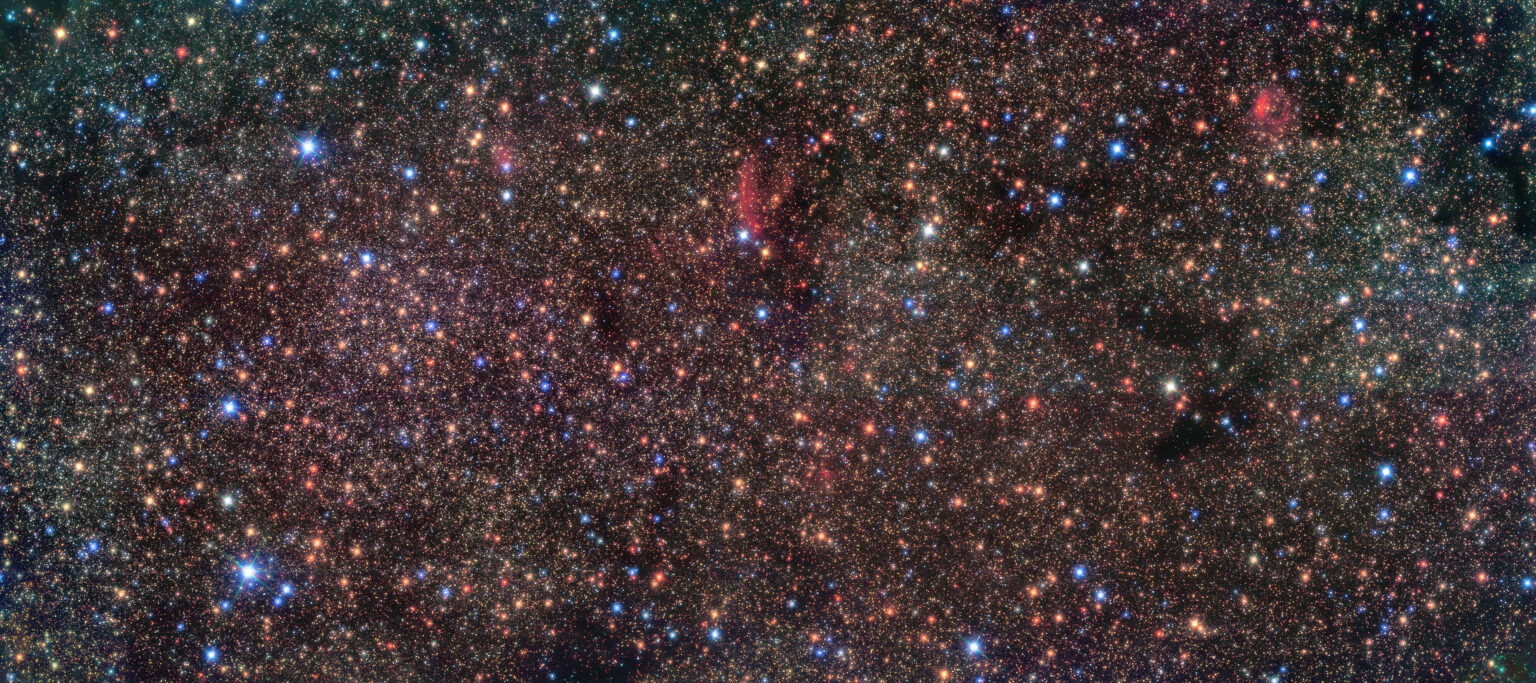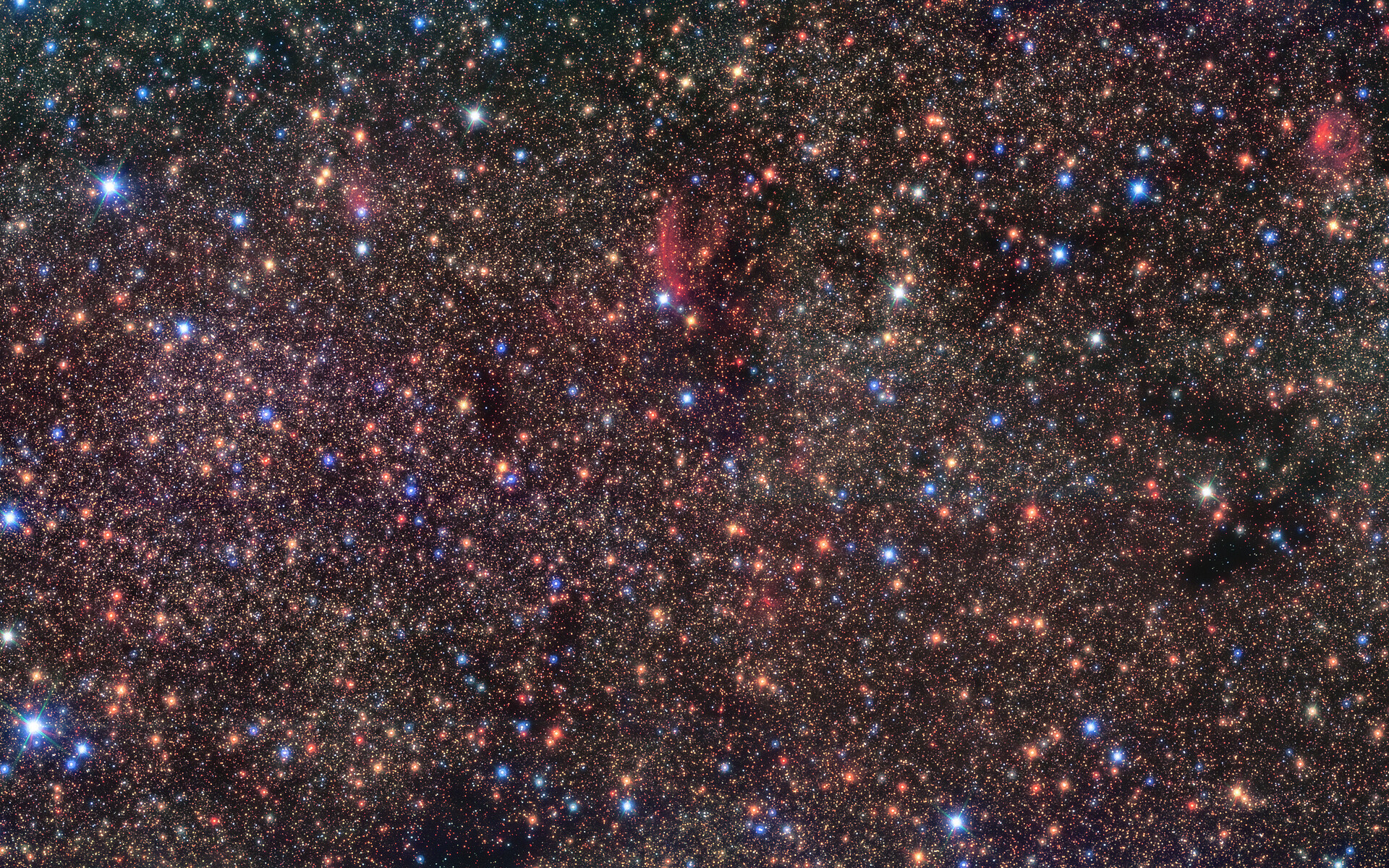The image presented below was obtained using the HAWK-I infrared receiver on ESO’s Very Large Telescope (VLT). It shows the Sagittarius B1 region close to the center of the Milky Way.

Problems of studying the center of the Milky Way
The center of our Galaxy is a very unusual region densely packed with stars. It is assumed that star formation is more intense here than anywhere else in the Milky Way. But so far, astronomers have detected here less than 10% of the number of young stars that they expected to find.
The study of the galactic center is further complicated by the fact that it is fogged by gas and dust clouds that block the light of the stars. Fortunately, infrared radiation penetrates dust, allowing astronomers to make observations with instruments like HAWK-I.
Sagittarius B1
The presented below photo of Sagittarius B1 was taken as a part of the GALACTICNUCLEUS survey. Its purpose is to obtain high-resolution infrared images of the galactic center.

In a recent study, a group of German astronomers discovered an excess of young stars in Sagittarius B1 with a total mass of more than 100,000 solar masses. This is an important step in scientists’ efforts to find all the expected young stars in the central regions of the Milky Way and to understand how they evolve in this unique environment.
Researchers have high hopes for the deployment of new infrared instruments, such as the infrared receivers ERIS on the VLT and MICADO on ESO’s Extremely Large Telescope (ELT), which is under construction. They will make it possible to study the detected stars in more detail, which should lead to a deeper understanding of the evolution of the galactic center.
Based on materials from https://www.eso.org
